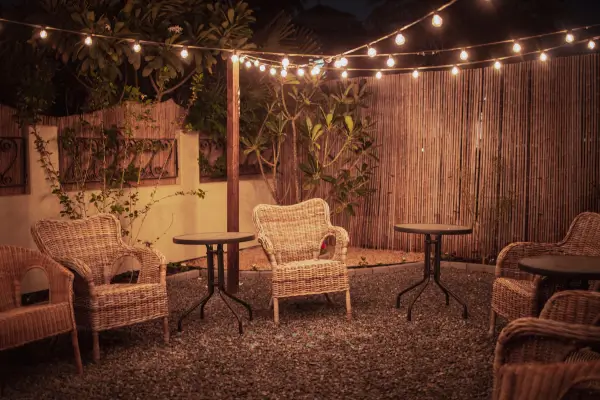Bringing greenery into your home is one of the most effective ways to add warmth, life, and balance to your space.
Among the many trending decor ideas, kokedama stands out for its simplicity, beauty, and connection to nature.
This Japanese botanical technique wraps a plant’s root system in soil and moss, creating a stunning natural feature — hanging or resting on a surface.
In this guide, you’ll learn what kokedama is, how it differs from potted plants, and how to make and care for your own.
Whether you’re refreshing a cozy corner or enhancing your workspace, kokedamas bring a serene and stylish charm to any area.
What is Kokedama?
Kokedama translates to “moss ball” in Japanese. It’s a traditional gardening method believed to have roots in bonsai.
While bonsai uses shallow pots, kokedama removes the container entirely. Instead, the plant’s roots are encased in a soil sphere, then wrapped in moss and string.
Once complete, it becomes a sculptural, living decoration — perfect for modern interiors with a love for nature.
Originally used in gardens, kokedamas are now popular indoors. Hang them from ceilings, place them in ceramic bowls, or group them in trays.
Each display becomes a unique focal point, adding movement, softness, and greenery to your space.
Why Kokedama Works in Home Decor
There are many reasons kokedamas are gaining popularity in design:
Minimalist Aesthetic: The clean, organic form suits Scandinavian, modern, or Japandi interiors.
Small-Space Friendly: Ideal for apartments and compact homes, they use vertical space efficiently.
Eco-Friendly Appeal: No plastic pots — just moss, soil, and string, all biodegradable.
Mindful Living: Creating and caring for kokedamas is soothing and meditative.
Materials You’ll Need
To get started, gather these supplies:
- A small plant (such as pothos, ivy, fern, peace lily, or spider plant)
- Bonsai soil or mix of akadama and peat moss (or potting soil + clay)
- Sphagnum or sheet moss
- Jute twine, string, or thin rope
- Water, gloves (optional), scissors
How to Make a Kokedama: Step-by-Step
Step 1: Choose a Plant
Pick one that suits your lighting. Avoid succulents — they don’t like moist soil.
Step 2: Prepare the Soil
Mix bonsai soil with peat moss or clay. Add water until it’s like wet clay and holds shape.
Step 3: Remove the Plant from the Pot
Gently shake off loose dirt. Trim away dead or damaged roots. Be gentle with healthy ones.
Step 4: Form the Ball
Press the soil mix around the roots to create a firm, round shape. Compact it with your hands.
Step 5: Add Moss
Soak the moss, then wrap it over the soil ball to cover it fully. It should stick easily to the moist soil.
Step 6: Wrap with String
Secure the moss by wrapping string or twine tightly in multiple directions. Tie a firm knot when done.
Step 7: Display
Hang it with extra twine, place in a shallow dish, or set on a natural tray.
How to Care for Kokedamas
Watering: Soak the moss ball in water for 10–15 minutes when it feels dry. Let it drain completely before replacing.
Lighting: Bright, indirect light works best. Direct sun can scorch the moss.
Humidity: Mist the moss regularly, especially in dry environments or during colder months.
Pruning: Remove yellow or dying leaves to keep the plant healthy and looking fresh.
Fertilizing: Once a month during spring/summer, use diluted liquid fertilizer.
Styling Tips: Where to Place Kokedamas
Floating Garden: Hang several kokedamas at different heights near a sunny window or reading nook.
Welcoming Entry: Display one in a bowl with stones on your console table for natural charm.
Work Zen: Hang one beside your desk to bring a calming, nature-inspired touch to your workspace.
Bathroom Greenery: If there’s natural light, bathrooms are great — the humidity helps the moss thrive.
Centerpiece Idea: Place a group in a wooden tray with candles and stones for a cozy, rustic feel.
Common Mistakes to Avoid
Overwatering: Let the moss dry slightly between waterings. Too much water can cause root rot.
Wrong Plant Type: Use plants that match your room’s light and humidity conditions.
Loose Wrapping: If not wrapped tightly, the ball can unravel over time.
Skipping Drainage: Always let the kokedama drip-dry before placing on furniture or surfaces.
Bringing kokedamas into your home is more than decoration — it’s an intentional, nature-connected lifestyle.
These moss-wrapped plants inspire creativity, calm, and care. They’re low-cost, high-impact pieces that invite nature in.
Whether you’re just starting or already a plant enthusiast, kokedamas are a beautiful way to green your home naturally.



